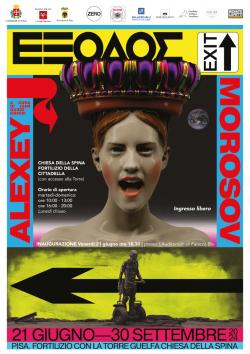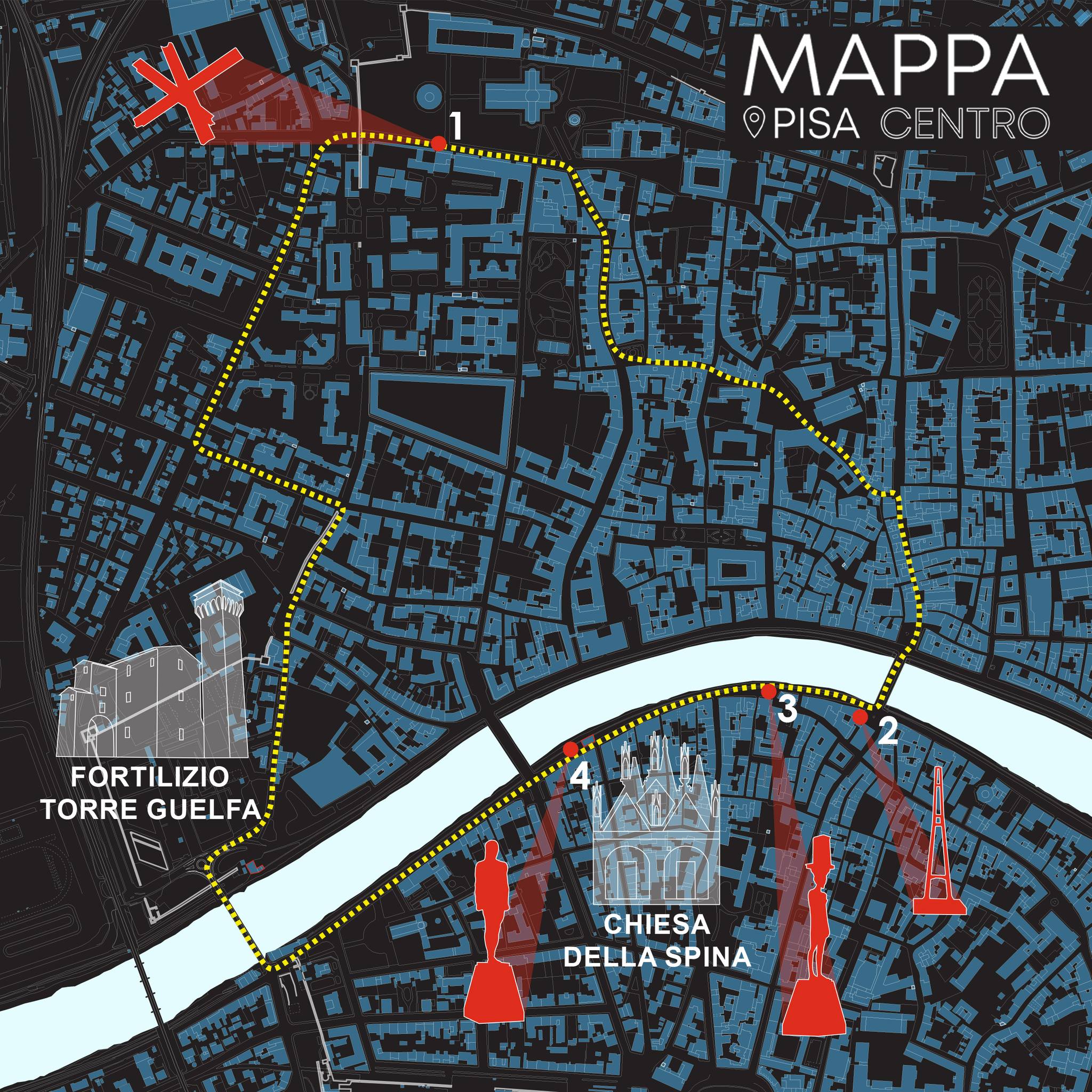
The exhibition will be extended, at the Church of Santa Maria della Spina only, until Sunday 13 October 2024.
From Saturday 22 June to Sunday 29 September Pisa hosts 'Exodus', a diffuse exhibition by the artist Alexey Morosov, touching some of the most iconic places. Piazza dei Miracoli, Palazzo Gambacorti, Palazzo Blu, the Church of Santa Maria della Spina up to the Fortilizio with the Guelfa Tower.
There are two main exhibition venues: the Church of Santa Maria della Spina, erected in 1230 to preserve one of the thorns of Christ's crown, and the Fortilizio with the Guelfa Tower, from the top of which one can enjoy one of the most extraordinary views of Pisa. Four sculptures will be placed outdoors, in a route that traverses the history of the city: starting from Via Duomo, in the context of Piazza dei Miracoli, a position of honour that only a few contemporary artists have had the privilege of conquering. The other works will be placed in Via Pietro Toselli, in front of Palazzo Blu, a historical residence and art centre, Lungarno Gambacorti, in front of the Church of Santa Maria della Spina, Lungarno Ranieri Simonelli, in the space in front of the Guelfa Tower.
After Pontifex Maximus (Museo Archeologico Nazionale di Napoli, 2016), Exodus is the third act in the trilogy conceived by the artist to identify a common matrix of the European community.
Alexey Morosov creates universes suspended between ancestral myths and post-apocalyptic scenarios. Time appears for what it is: a human construction, which can be bent back and forth between ancient myths and the digital contemporary.
Inauguration: 21 June at 6.30 p.m. in the Auditorium of Palazzo Blu.
The Church of Santa Maria della Spina will be open Tuesday to Sunday from 10 a.m. to 1 p.m. and 4 p.m. to 8 p.m. until 30 September 2024. Closed on Mondays.
The Citadel Fortress will be open Tuesday to Sunday from 10 a.m. to 1 p.m. and 4 p.m. to 8 p.m. until 1 September 2024.
On this occasion, it will also be possible to visit the Guelph Tower. Free admission.
Exodus is a project by Alexey Morosov, directed by Gianguido Grassi and organised by the Municipality of Pisa and the association Start Attitude, with the contribution of the Regional Council of Tuscany and the collaboration of Palazzo Blu, and enjoys the patronage of the Province of Pisa.
THE ARTIST
Alexey Morosov was born in Kyrgyzstan in Bishkek (formerly Frunze) in 1974. He has exhibited in public and private spaces internationally from St. Petersburg to Singapore, from London to Paris, via Moscow, Verona, Pietrasanta, Istanbul and Naples, establishing himself as one of the most significant artists on the contemporary scene. His works can be found in important public and private collections. A graduate of the Surikov Art Institute, the Moscow State Academy, in 1999 he moved to Provence where he continued his studies in sculpture.
The artist deepened his knowledge of the techniques and materials of plastic art through a long and continuous experience in the Apuo-versiliese region, where he perfected the procedures handed down by tradition both in marble sculpture and in foundry and metalworking processes. He also collaborated with Timur Novikov, artist and founder of the New Academy of Fine Art in St Petersburg.
Since his training, he has developed the different expressive disciplines of painting, sculpture and drawing in parallel, harmonising classical and contemporary iconographies and not disdaining the study of new expressive technological tools. 2003 was the year of two solo exhibitions in St. Petersburg: 'Craft Deco classic' at the D-137 Gallery and 'Craft Deco_academic' at the same city's Academy. His work has been exhibited in numerous group exhibitions in Moscow, where he is represented by Triumph Gallery. Since 2014 he has been awarded the prestigious distinction of being a member of the Presidium of the RAA (Russian Academy of Arts). He has been living and working in Lucca since 2015. Morosov's research combines an acute observation of contemporary languages with the idea that Western culture must find new opportunities to interpret its past, to rediscover its myths and imagery in a new light. His art is a constant proof of the never-ending relationship between classical forms and contemporary innovations. This poetic of his has been clearly expressed in his latest major exhibitions, such as the one held at the National Archaeological Museum in Naples.
